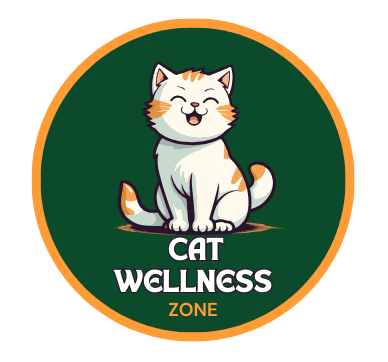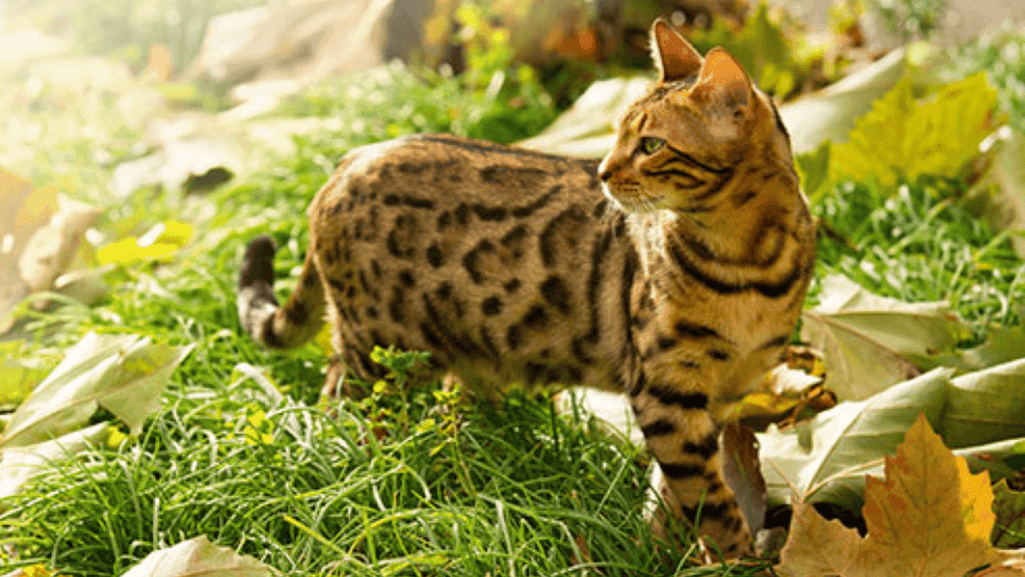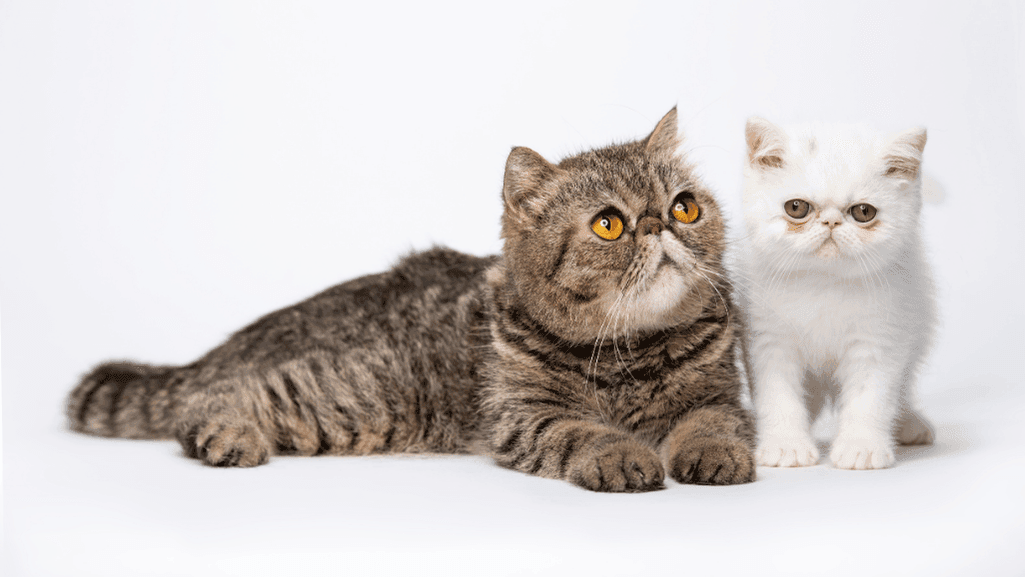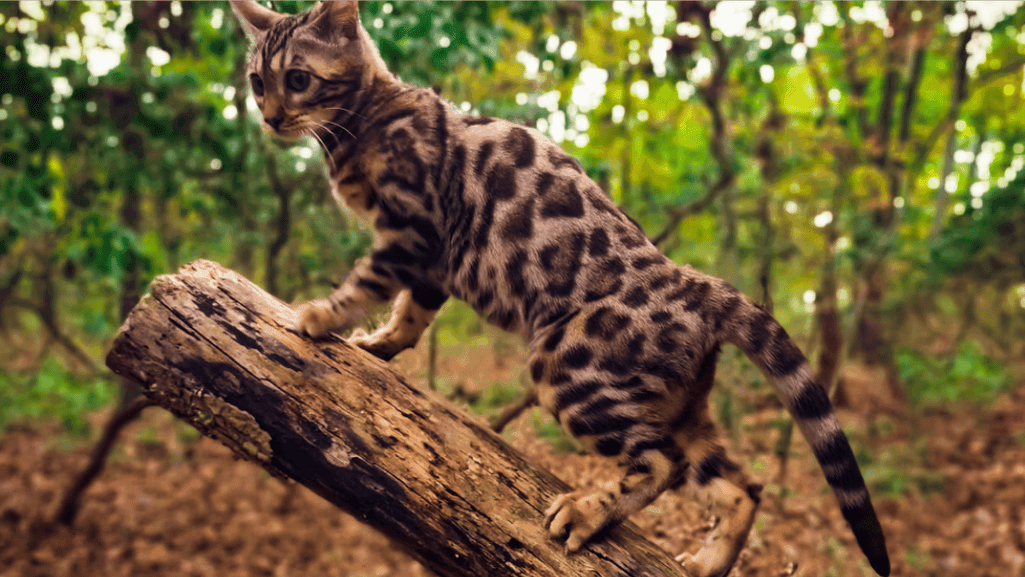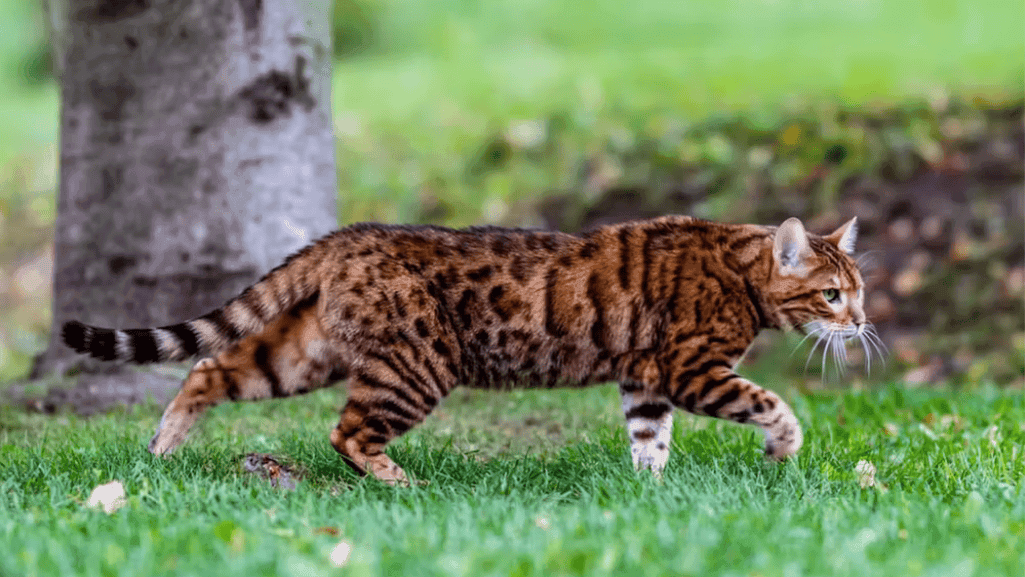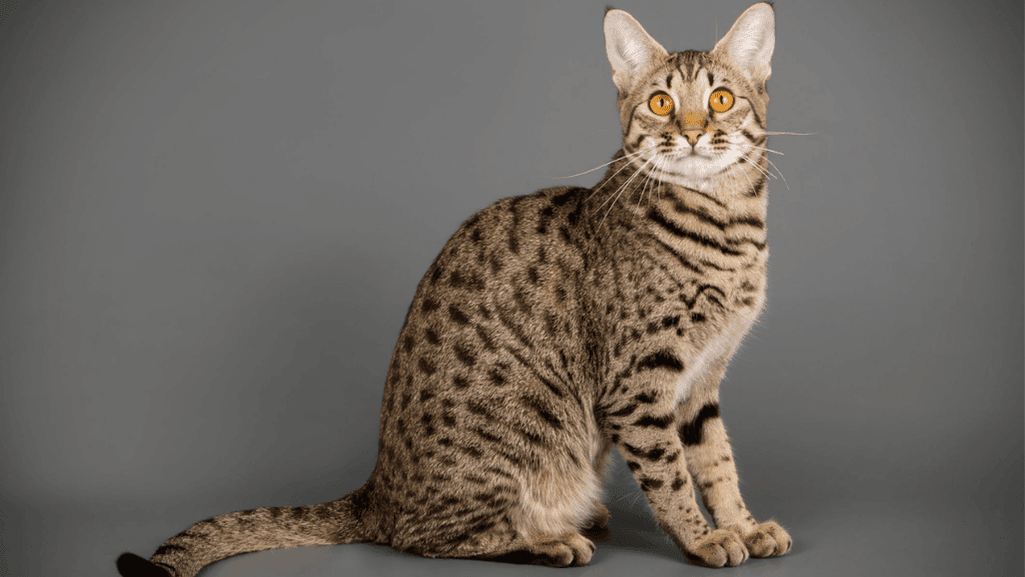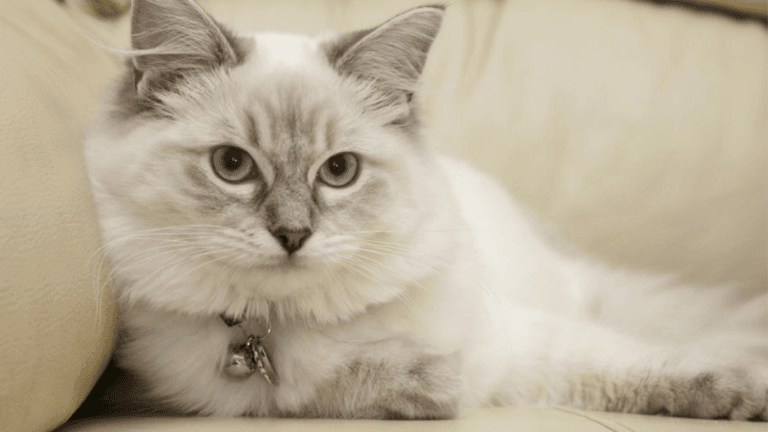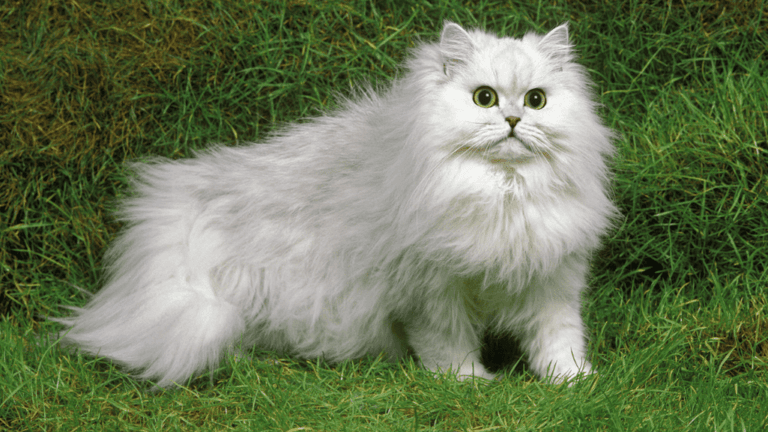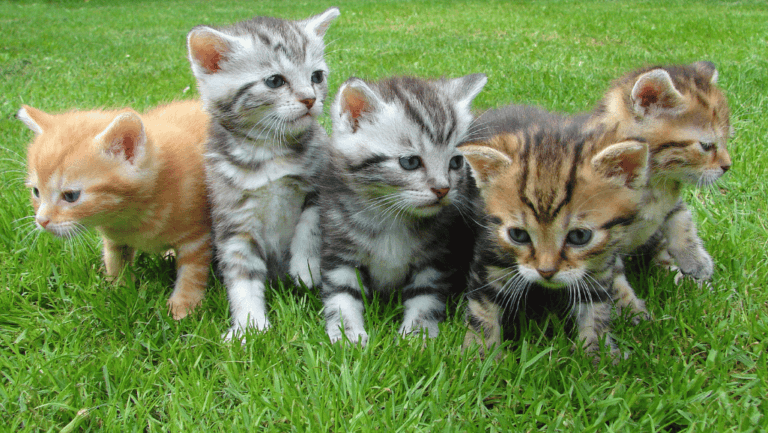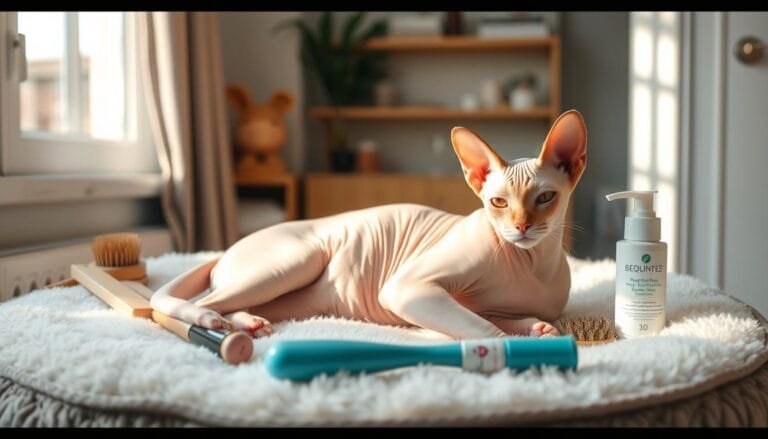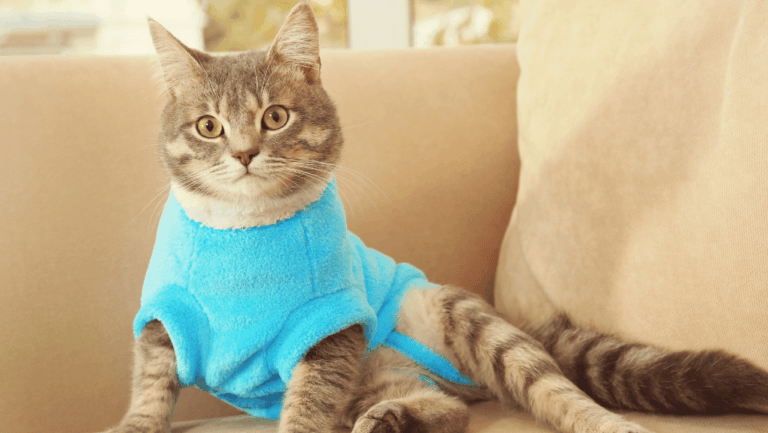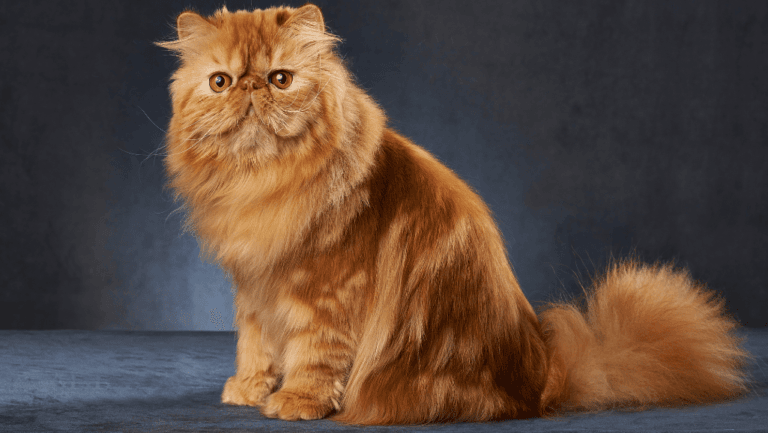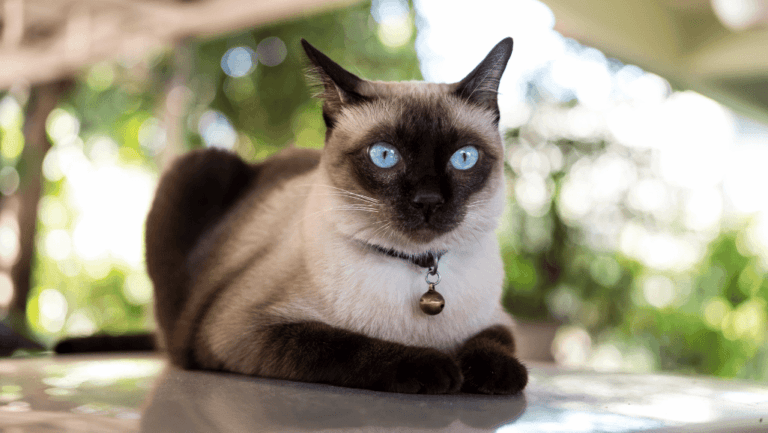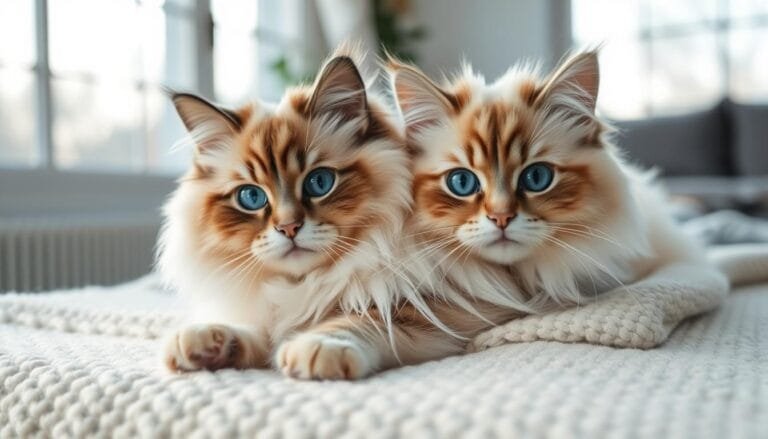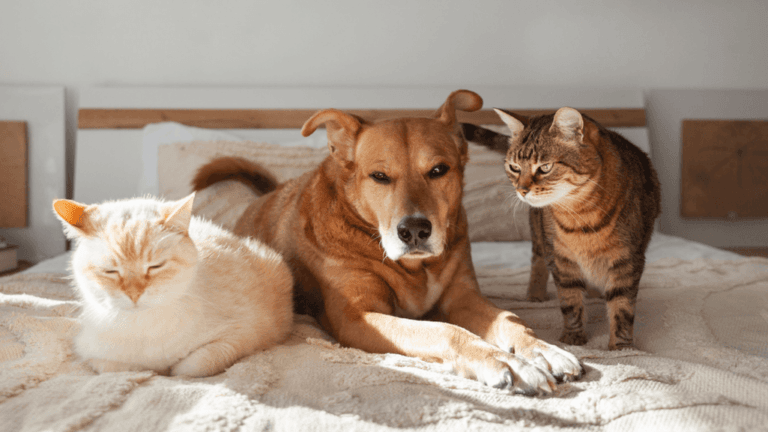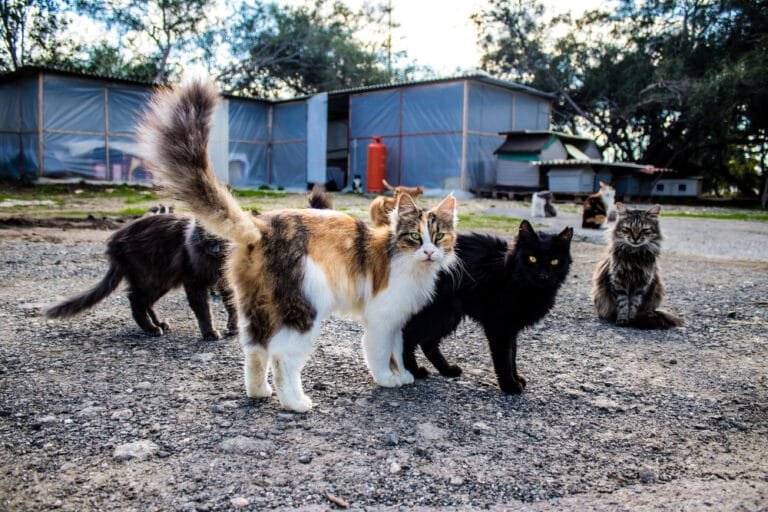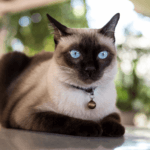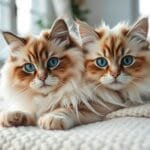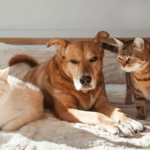Start an enchanting journey into the world of exotic domestic cats. Here, the beauty and personality of unique house cats go beyond the usual. The charm of special domestic felines wins hearts with their unique traits and wide range of characteristics.
Meet breeds like the majestic Ashera and the lively American Bobtail. Each offers a peek into the extraordinary and adds richness to the lives of those who share their homes with these unusual house kittens.
Key Takeaways
- Exotic domestic cats add a touch of the wild to your home with their unique looks and traits.
- Each breed, from the hypoallergenic Siberian to the Bengal, has special needs and traits that need careful care.
- Knowing the specific needs and personalities of exotic cat breeds is crucial for a peaceful home.
- Prospective cat owners should know about the rarity and value of breeds like the Norwegian Forest Cat. This can affect the cost of owning one.
- The happiness rate among those who adopt exotic breeds like Ragdolls and Munchkins is very high. This shows how much joy these cats bring to their families.
- It’s important to have responsible breeding and adoption practices to ensure the well-being of these special domestic felines.
- Exotic domestic cats are not just beautiful to look at. They also offer a special companionship that enriches the lives of their owners.
The Enigmatic Beauty of Exotic Domestic Cats
Exotic domestic cats are more than pets; they show the natural world’s artistry. They mix wild beauty with home life gentleness. These cats, with their unique looks and mysterious nature, draw fans who want a bit of the wild at home.
Defining the Exotic Appeal
The charm of exotic cats comes from their special mix of features. Breeds like the Bengal and Maine Coon bring a piece of the wild into homes. Their beauty and unique traits make them stand out in any home.
Physical Traits That Stand Out
Some cats, like the Egyptian Mau and Siberian, have traits that are both beautiful and useful. The Egyptian Mau’s body is built for speed, while the Siberian’s fur keeps it warm in cold weather.
Why Exotic Domestic Cats Captivate
Exotic cats are special because they connect two worlds. The Ocicat, for example, looks like an ocelot but is as friendly as a tabby. Their mix of wild and tame makes them beloved pets.
| Breed | Unique Trait | Typical Lifespan | Cost |
|---|---|---|---|
| Maine Coon | Lion-esque mane | 10-13 years | $1000 – $2000 |
| Bengal | Leopard-like spots | 12-16 years | $1500 – $3000 |
| Egyptian Mau | Speed up to 30 mph | 12-15 years | $600 – $1200 |
| Siberian | Lush, thick fur coat | 12-15 years | $1200 – $2400 |
| Ocicat | Ocelot-like markings | 10-15 years | $800 – $1500 |
Rare and Sought-After: The Economics of Owning Unique Cats
The charm of owning unique cats has always drawn in fans of rare domesticated felines. But, it’s important to grasp the financial side of these high-cost exotic cats. For many, the appeal of luxury domestic cat breeds goes beyond their looks. It’s the prestige they bring, making them valuable house cat species in a competitive market.
Getting one of these cats means serious financial planning. Costs range from the initial purchase to ongoing care. Here’s a detailed look at the costs for some popular breeds:
| Breed | Average Cost |
|---|---|
| Maine Coon | $1,000–$2,000 |
| Peterbald | $1,000–$2,600 |
| Scottish Fold | $1,500–$2,500 |
| British Shorthair | $1,500–$3,000 |
| Ragdoll | $1,500–$3,000 |
| Russian Blue | $1,500–$3,000 |
| Himalayan | $2,800–$3,500 |
| Persian | $1,300–$5,000 |
| Toyger | $1,500–$6,000 |
| Sphynx | $3,500–$6,000 |
Costs don’t stop at buying the cat. You’ll also need to pay for special vet care and setting up a nice home. A fancy pet habitat with toys and structures is key, matching the cat’s high value.
The ethics of owning high-cost exotic cats is a big debate. It’s not just about their welfare but also the big financial commitment. Owning such cats means giving them a life of luxury, which is a big responsibility.
With millions of exotic animals sold worldwide, and poaching linked to the trade, it’s crucial to understand the costs and ethics. Owning a rare pet is a big responsibility, covering all their needs for a happy life.
In summary, while owning rare domesticated felines and luxury domestic cat breeds is expensive, the joy they bring is worth it. Make sure you fully understand the financial and ethical sides before deciding to buy or adopt.
Profiles of Popular Exotic Domestic Cat Breeds
Exploring exotic cat breeds shows us a world of unique traits and charm. From the Sphynx’s hairless skin to the Savannah’s wild charm, and the Bengal’s playful spirit. These cats mix the wild with domestic charm in a special way.
The Affectionate Sphynx: Hairless Splendor
The Sphynx is known for its hairless skin and Sphynx cat characteristics. They are not truly hairless but have soft downy fur. This makes them warm and affectionate, perfect companions for many.
Impressive Savannahs: Majestic and Wild
Savannah cats mix domestic grace with the wild essence of the African serval. They are majestic and mysterious. Many U.S. states require them to be at least four generations removed from wild ancestors, showing their domesticated yet exotic side.
The Curious Bengal: A Leopard in Disguise
Bengal cats are popular for their striking looks and Bengal cat temperament. They look like leopards with their patterned fur and athletic build. Bengals are smart and curious, making them fun pets but needing lots of interaction.
Understanding the diversity of these breeds is key. A comparison of their physical traits and adaptability is essential. The table below provides a detailed look:
| Breed | Weight Range | Unique Characteristics | Place of Origin |
|---|---|---|---|
| Sphynx | Up to 10 pounds | Hairless with a fine downy coat | Canada |
| Savannah | Up to 25 pounds | Resembles African serval, regal demeanor | USA |
| Bengal | Up to 18 pounds | Leopard-like coat, energetic and agile | USA |
| Toyger | Up to 15 pounds | Striped fur simulating a tiger, friendly nature | USA, 1980s |
Each breed offers a unique experience of owning domesticated wild cats. It’s a journey into the enchanting world of unique companions.
Exotic Cat Breeds for Homes: Compatibility and Care
Choosing exotic cat breeds as pets means embracing their unique traits. Knowing that domestic cat species vary in temperament and needs is key. For example, the playful Cornish Rex keeps its kitten-like spirit, while the sociable Siamese thrives in lively homes.
Understanding the Personality Profiles
Special domestic feline types like Maine Coons are known for their size and gentle nature. They fit well in homes that value a calm yet strong pet. On the other hand, the active Bengal and majestic Savannah add a wild touch, needing more play and interaction.
Specialized Care for Exotic Breeds
Caring for these cats requires more than just basic pet care. Providing large spaces and high places for climbing is essential. This helps keep their health strong and meets their natural instincts. Breeds like the Serengeti and Cheetoh, with long lives, need a healthcare plan to prevent specific issues.
Creating the Ideal Home Environment
Introducing new exotic cat breeds as pets to your home needs careful planning. Start with scent-sharing before visual or physical contact. This gradual approach helps them adjust and feel comfortable with each other.
Knowing each cat’s unique needs creates a nurturing home. This ensures both humans and cats can thrive together. By focusing on compatibility and tailored care, these special domestic feline types can live happy, healthy lives.
| Breed | Height | Weight | Life Expectancy |
|---|---|---|---|
| Bengal | 13 to 16 inches | 8 to 15 lbs. | 9 to 15 years |
| Savannah | 14 to 17 inches | 7.5 to 24 lbs. | 12 to 20 years |
| Chausie | 14 to 18 inches | 8 to 16 lbs. | 12 to 14 years |
| Serengeti | 10 to 16 inches | 8 to 15 lbs. | 8 to 12 years |
| Cheetoh | 12 to 18 inches | 12 to 25 lbs. | 10 to 15 years |
| Toyger | 9 to 13 inches | 7 to 15 lbs. | 10 to 15 years |
| Pixie-bob | 9 to 13 inches | 8 to 17 lbs. | 13 to 15 years |
The World of Hybrid Domestic Cats
Hybrid domestic cats are fascinating, blending domestic felines with their wild ancestors. Breeds like the Bengal and Savannah show the beauty and complexity of these animals. They are more than pets; they are a mix of wild and tame traits. This sparks important talks about ethical breeding and animal care.
The Ethics and Controversy of Breeding Hybrids
There’s a big debate about breeding hybrid cats like Bengals and Savannahs. Some say it’s bad for both domestic and wild cat populations. Ethical breeding means caring for the animals and thinking about the environment. Big Cat Rescue knows how hard it is to keep hybrid cat populations stable without harming wild ones.
Understanding the Hybrid Breeds: Savannah and Bengal
| Category | Bengal | Savannah |
|---|---|---|
| Weight | 12-18 pounds | 20-25 pounds |
| Origin | Asian Leopard Cat cross | African Serval cross |
| Personality | Playful, energetic | Loyal, high-energy |
| Special Needs | High protein diet, ample exercise | Large space to play, high fences |
| Legal Status in U.S. | Legal, with variations depending on state | Requires four generations removed from wild ancestors |
| Common Challenges | Hybrid vigor, sometimes aggressive play | May display wild traits, requires experienced handling |
Hybrid domestic cats are captivating. But, they need careful handling because of their wild side. Ethical breeding helps these amazing animals live well in homes. It also deepens our respect for nature and its creatures.
Cultural Impact of Exotic Domestic Cats on Society
The presence of exotic domestic cats in homes worldwide shows more than just a pet preference. It reflects deeper cultural layers that touch on social status and personal identity. These cats, with a history dating back 9,500 years on Cyprus, have become symbols of sophistication and charm. They show the cultural significance of exotic cats in today’s society.
Originating from the Middle East, the history of domestic cats is rich and intertwined with human history. They moved from being revered animals to royal symbols in cultures. Now, they add luxury and the exotic to our lives.
The societal perceptions of unique pets change with breeds like Maine Coons and Turkish Angoras. They symbolize beauty and a connection to the wild. These cats have evolved from hunters to beloved family members in many American homes.
The image of exotic house pets is one of exclusivity and rare beauty. Over 600 million cats worldwide are part of human lives. Breeds like Sphynx and Bengal offer companionship and a unique look, changing what we expect from pets.
| Characteristic | Details |
|---|---|
| Aesthetic Appeal | Exotic cats like the Sphynx provide a unique look with their distinct physical traits, influencing modern pet fashion trends and standards. |
| Cultural Symbol | As former symbols of royalty and mystique, exotic breeds carry a rich history that influences their perceived value in society today. |
| Economic Impact | The desirability of rare breeds can drive significant economic activities including breeding, pet care industries, and luxury pet products. |
| Conservation Conversation | Their presence sparks discussion on ethical pet ownership and conservation of wildlife, given the heritage of breeds like Bengals. |
The allure of these captivating creatures shapes our social constructs and personal choices. The cultural significance of exotic cats deepens our understanding of nature, nurture, and civilization. They live in our homes and in our society, changing how we interact and what we expect from pets.
The Joys and Challenges of Exotic Cat Ownership
Having exotic domestic cats as pets is both joyful and challenging. Owners must learn about the exotic pet cat species responsibilities. This knowledge is key to keeping a pet happy and healthy. These cats are more than pets; they are important family members needing special care.
Addressing the Misconceptions
Many people start with wrong ideas about exotic cats. Unlike regular cats, exotic breeds like Bengals or Savannahs have unique traits. They need big spaces and special diets that match their wild origins.
Lifestyle Changes for Exotic Cat Owners
Adapting to life with an exotic cat is essential. Owners must create large habitats and engage in regular activities to meet their natural instincts. These cats are often more energetic and need more interaction than regular house cats.
Long-Term Commitment and Responsibilities
Dealing with exotic cats is a long-term promise. It’s not just about feeding them. It involves constant learning, regular vet visits, and sometimes legal issues to follow local laws.
Here’s a breakdown of the specific needs for exotic domestic cats:
| Requirement | Description |
|---|---|
| Dietary Needs | Specialized diet including higher protein content and possibly live food depending on the breed. |
| Habitat | Large, secure spaces that mimic an outdoor environment with climbing and hiding areas. |
| Healthcare | Regular check-ups with a specialized vet, vaccinations, and parasite control. |
| Behavioral Management | Enrichment activities to address their high energy levels and natural instincts. |
Deciding to own an exotic cat is a big choice. It requires big changes in your life, from daily care to long-term health and habitat management. But for those ready, it’s a rewarding experience filled with love, learning, and a unique bond.
Adoption and Regulatory Aspects of Exotic Domestic Cats
Thinking about getting an exotic domestic cat is exciting but comes with big responsibilities. These amazing animals are a joy to have, but you must follow the law carefully.
Navigating Legal Restrictions and Requirements
Adopting an exotic cat means knowing the laws in your area. Laws about owning these cats vary a lot. Some places allow it, while others don’t.
It’s key to check your local laws before getting a cat. This way, you avoid legal trouble.
Where to Responsibly Source Exotic Cats
Getting a cat from a good breeder or adoption agency is important. These places focus on the cat’s health and happiness. They make sure the cat gets the right food and care.
Looking for a reputable breeder means you support good breeding practices. It also helps animals. Knowing what these cats need and the laws helps them live well in their new homes.
Conclusion
The world of exotic domestic cats is filled with beauty and complexity. Each breed brings a special charm to our homes, offering unmatched companionship. Yet, owning these cats comes with important economic, ethical, and ecological considerations.
Adopting cats like Savannahs, Sphynxes, and Bengals is exciting. But, we must think about the impact on our ecosystems and the animals’ welfare. We face risks like zoonotic diseases and harm to wildlife. It’s crucial to provide the right care and enrichment for these unique cats.
In summary, exotic domestic cats are captivating but require careful ownership. For those ready to commit, these cats can be extraordinary companions. They remind us to respect and understand our place in nature.
